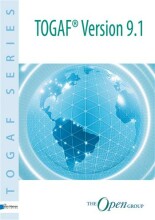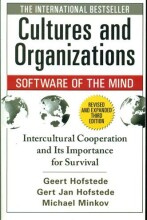Summary: Togaf Version 9.1 | 9789087536794 | prepared Open Group Architecture Forum, et al
- This + 400k other summaries
- A unique study and practice tool
- Never study anything twice again
- Get the grades you hope for
- 100% sure, 100% understanding
Read the summary and the most important questions on TOGAF Version 9.1 | 9789087536794 | [prepared by The Open Group Architecture Forum, Dave Hornford (chair) ... et al.].
-
1 Introduction
-
1.1 Structure of the TOGAF Document
-
What are the seven parts of the TOGAF document?
- PART I Introduction
- PART II Architecture Development Method (ADM)
- PART III ADM Guidelines and Techniques
- PART IV Architecture Content Framework
- PART V Enterprise Continuum & Tools
- PART VI TOGAF Reference Models
- PART VII Architecture Capability Framework
-
What is the intention of dividing the TOGAF specification?
- To allow for different areas of specialization to be considered in detail and potentially addressed in isolation
- To make it possible to select particular parts for adoption
-
1.2 Executive Overview
This is a preview. There are 4 more flashcards available for chapter 1.2
Show more cards here -
How can an architect adress the concerns of the "stakeholders" in the change?
- Identifying an refining the requirements that the stakeholders have.
- Developing views of the architecture that show how the concerns and requirements are going to be addressed
- Showing the trade-offs that are going to be made in reconcilling the pontentially conflicting concerns of different stakeholders.
-
1.2.2 Why do I need an enterprise architecture?
-
Why is an Enterprise Architecture needed?
The purpose of Enterprise Architecture is to optimize across the enterprise the often fragmented legacy of processes (both manual and automated) into an integrated environment that is responsive to change and supportive of the delivery of the business strategy. -
1.2.4 What is an architecture framework?
-
What is an architecture framework?
An architecture framework is a foundational structure, or set of structures, which can be used developing a broad range of different architectures.
It should describe a method for designing a target state of the enterprise in terms of a set of building blocks, and for showing how the building blocks fit together.
It should contain a set of tools and provide a common vocabulary. It should also include a list of recommended standards and compliant products that can be used to implement the building blocks. -
1.2.5 Why do I need TOGAF as a framework for enterprise architecture
-
Why use the TOGAF standard as a framework for Enterprise Architecture?
The TOG AF standard has been developed through the collaborative efforts of the whole community.
Using the TOGAF standard results in Enterprise Architecture that is consistent, the needs of stakeholders, employs best practice, and gives due consideration both to current requirements and the perceived future needs of the business. -
Who would benefit from using the TOGAF standard?
- organization undertaking, or planning to undertake, the development and implementation an Enterprise Architecture for the support of business transformation
- Organizations seeking Boundaryless Information Flow™ to define implement the structures and processes
- Organizations that design and implement Enterprise Architectures are assured of a design and a procurement specification that can facilitate an open systems implementation, thus enabling the benefits of open systems with reduced risk.
-
What are the benefits of an Enterprise Architecture part I?
- More effective and efficient business operations:
- Lower business operation costs
- More agile organization
- business capabilities shared across the organization
- Lower change management costs
- More flexible workforce
- Improved business productivity
- More effective and efficient Digital Transformation and IT operations:
- Extending effective reach of the enterprise through digital capability
- Bringing all components of the enterprise into a harmonized environment
- Lower software development, support, and maintenance costs
- Increased portability of applications
- Improved interoperability and easier system and network management
- Improved ability to address critical enterprise-wide issues like security
- Easier upgrade and exchange of system components
-
What are the benefits of an Enterprise Architecture part II?
- 'Better return on existing investment, reduced risk for future investment
- Reduced complexity in the business and IT
- Maximum return on investment in existing business and IT infrastructure
- The flexibility to make, buy, or out-source business and IT solutions
- Reduced risk overall in new investments and their cost of ownership
- Faster, simpler, and cheaper procurement:
- decisions are simpler, because the information governing procurement is readily available in a coherent plan
- The procurement process is fester—maximizing procurement speed and flexibility without sacrificing architectural coherence
-
2 Core Concepts
-
2.2 What is Architecture in the Context of TOGAF?
This is a preview. There are 3 more flashcards available for chapter 2.2
Show more cards here -
What is Architecture in the Context of TOGAF?
It has two meainings depending upon the context:- A formal description of a system, or a detailed plan of the system at component level to guide its implementation
- The structure of components, inter-relationships, and the principles and guideliness governing their design and evolution over time.
- Higher grades + faster learning
- Never study anything twice
- 100% sure, 100% understanding
Topics related to Summary: Togaf Version 9.1
-
Core Concepts - What Kind of Architecture Does TOGAF Deal With?
-
Core Concepts - Architecture development method
-
Core Concepts - Deliverables, artifacts and building blocks
-
Definitions - Architecture Principles
-
ADM Introduction
-
Preliminary Phase - Approach - Management Frameworks
-
Phase A: Architecture Vision
-
Phase B: Business Architecture
-
Phase D: Technology Architecture
-
Phase H: Architecture Change Management - Approach
-
Architecture Principles - Developing Architecture Principles
-
Architecture Patterns - Introduction
-
Business Scenarios and Business Goals - Introduction
-
Business Transformation Readiness Assessment - Introduction
-
Introduction (Part IV Architecture Content Framework)
-
Architectural Artifacts - Architectural Artifacts by ADM Phase
-
Architecture Board
-
Architecture Governance

































